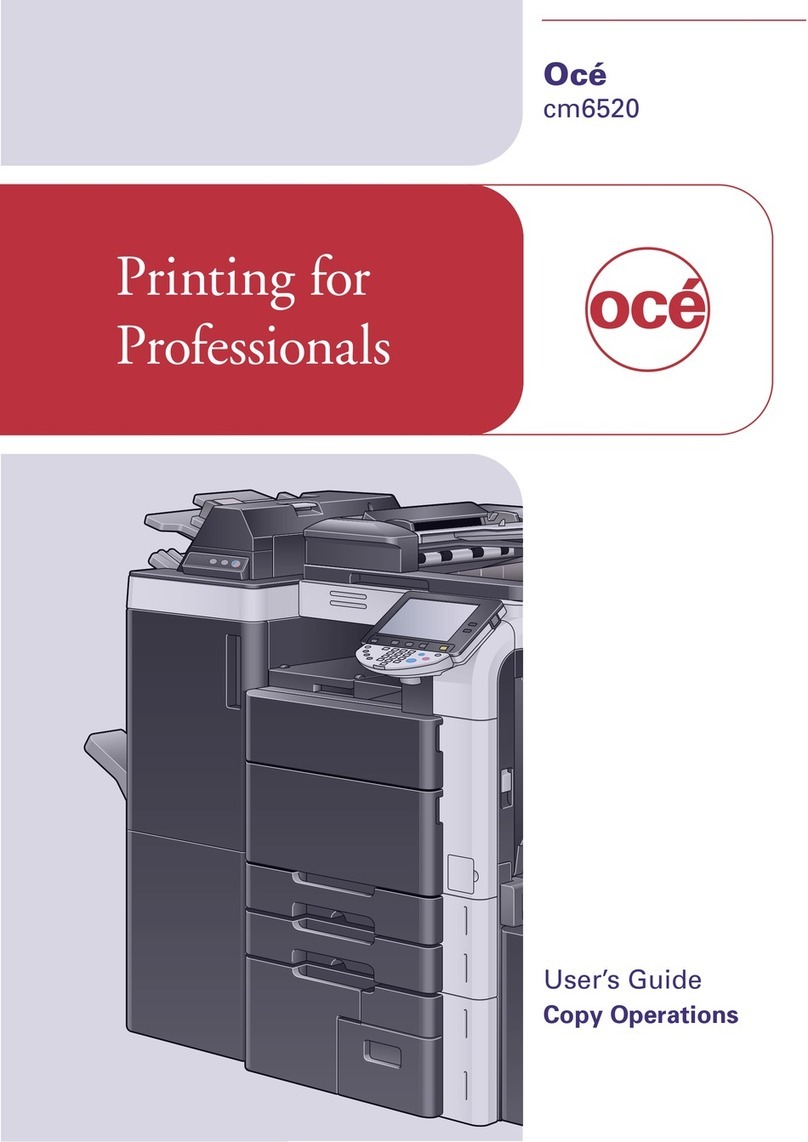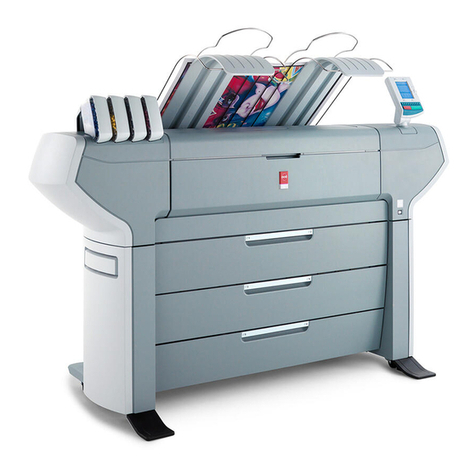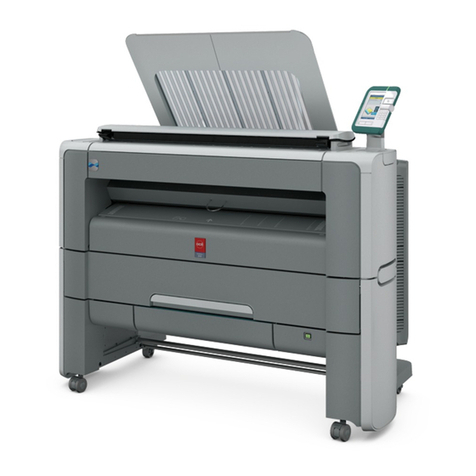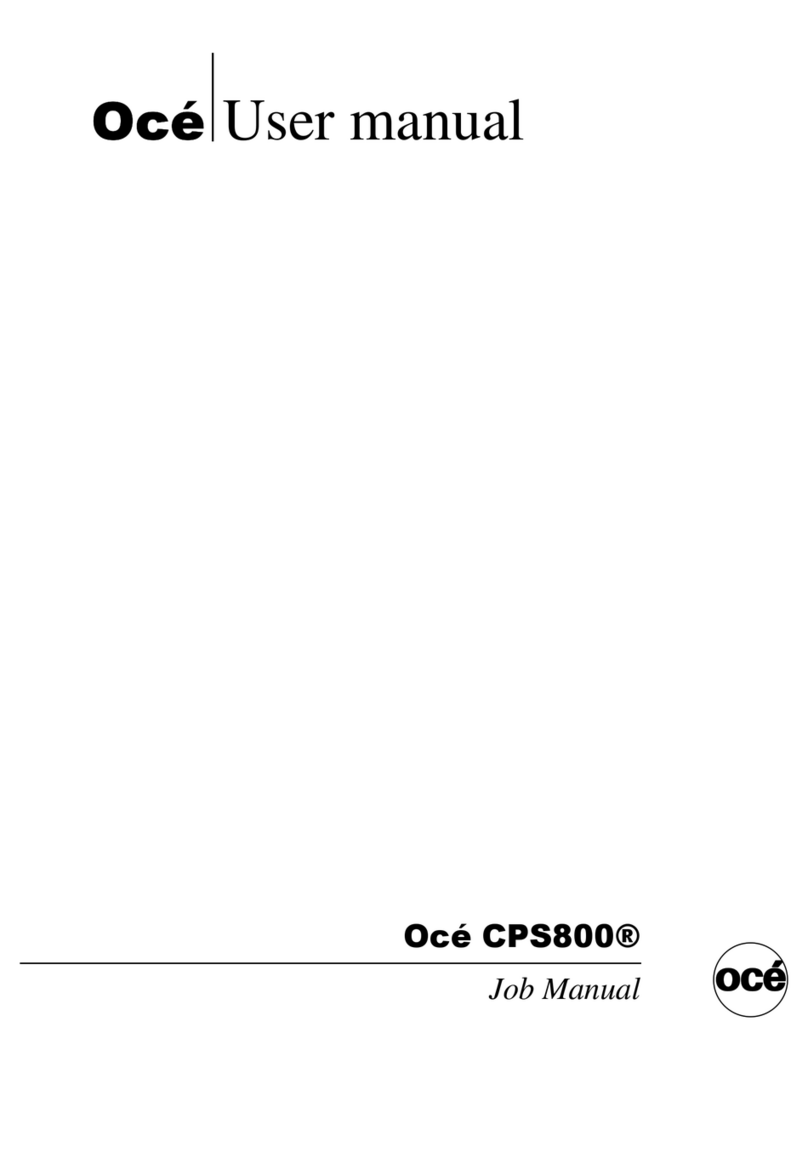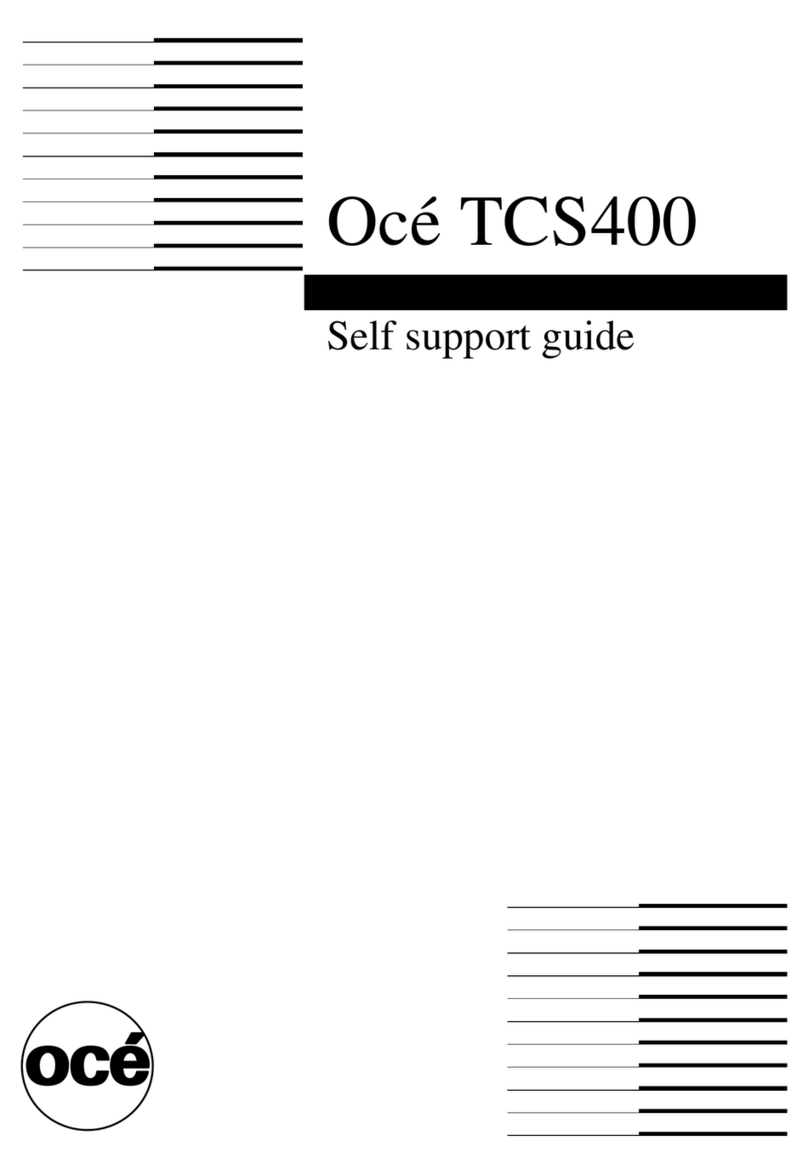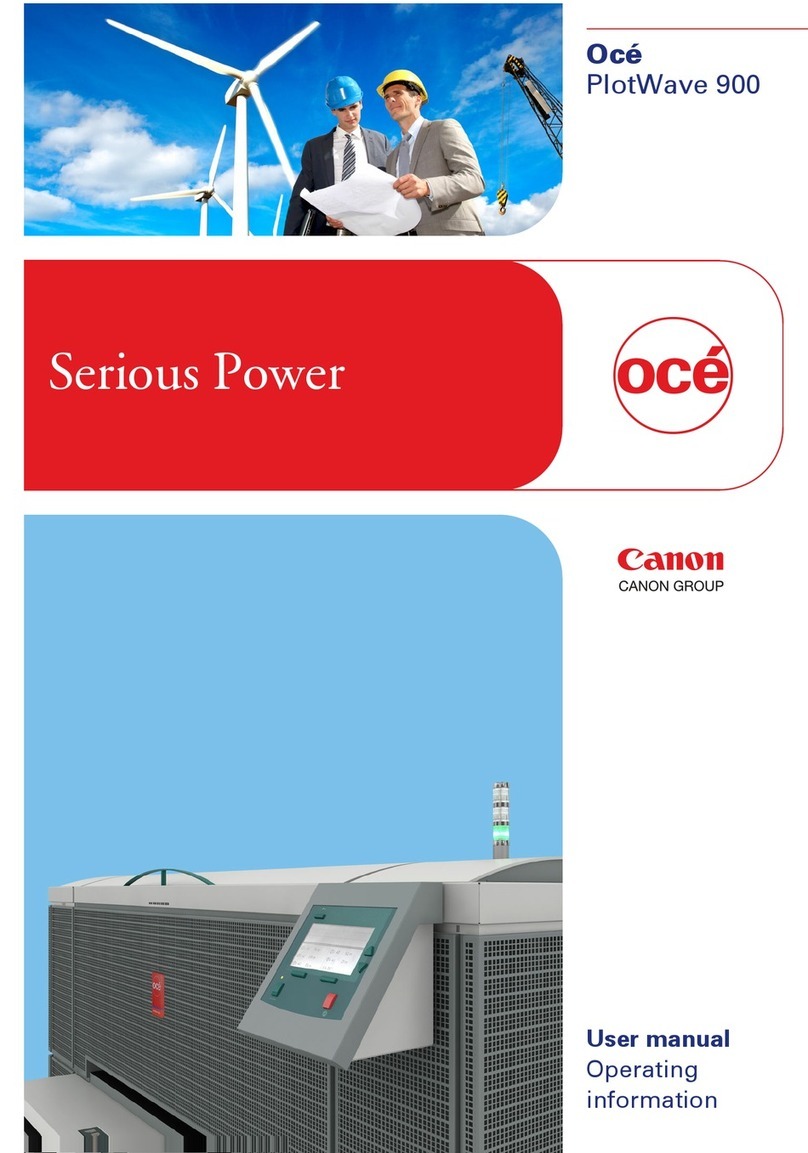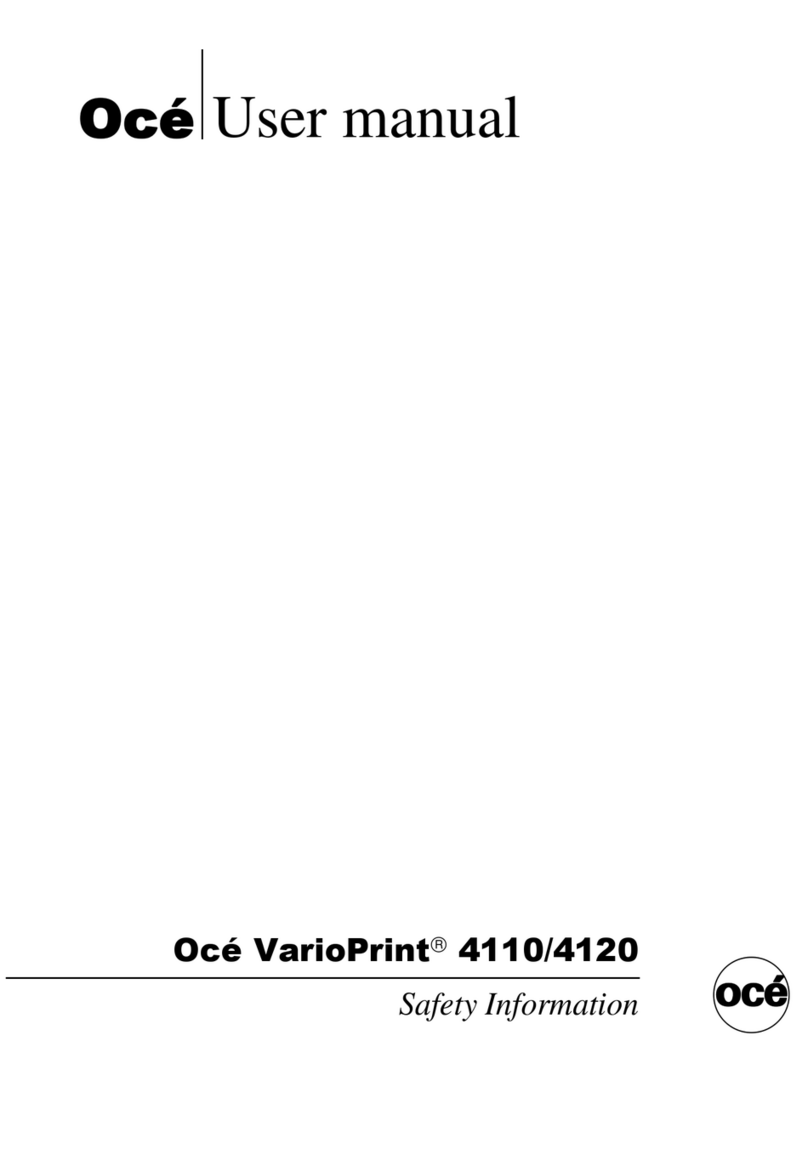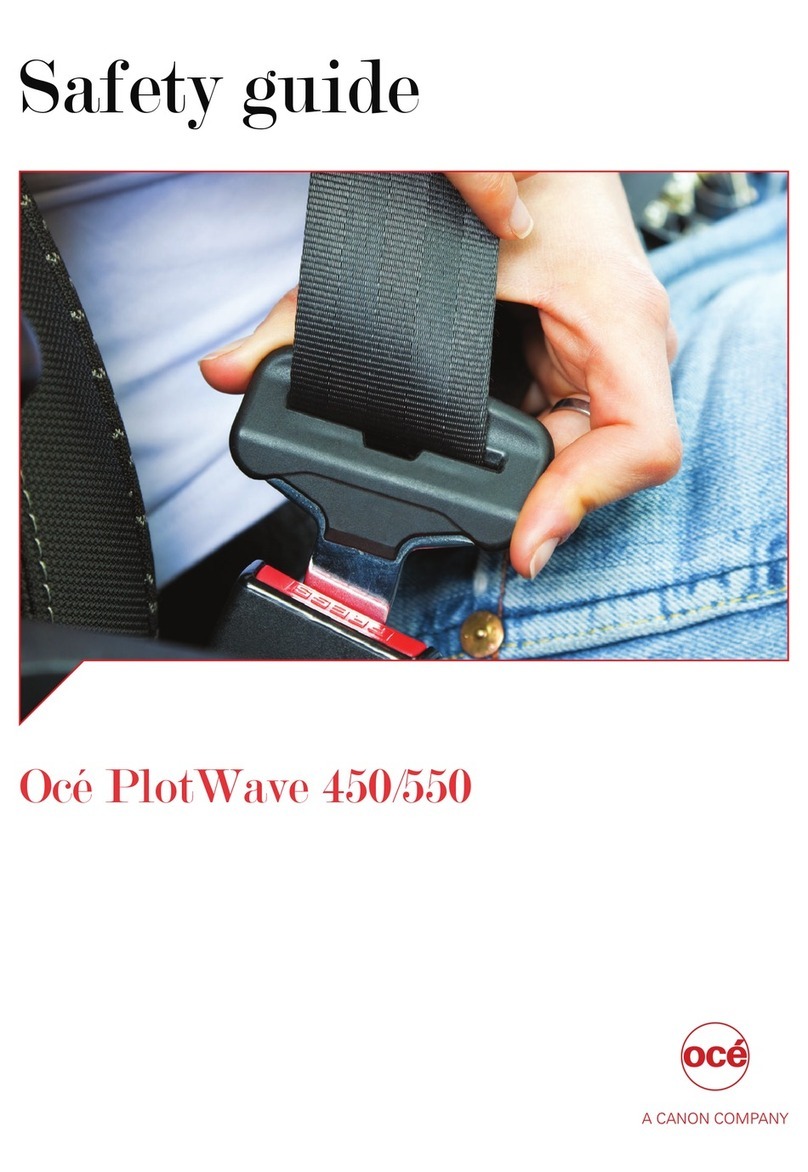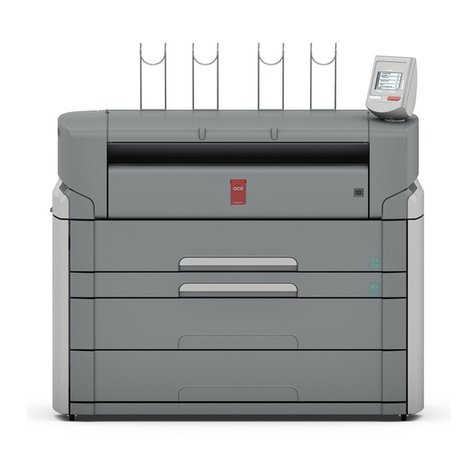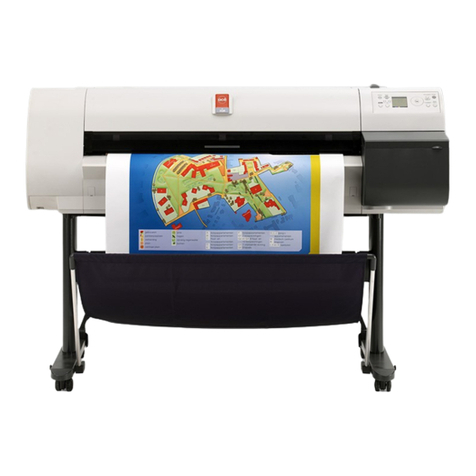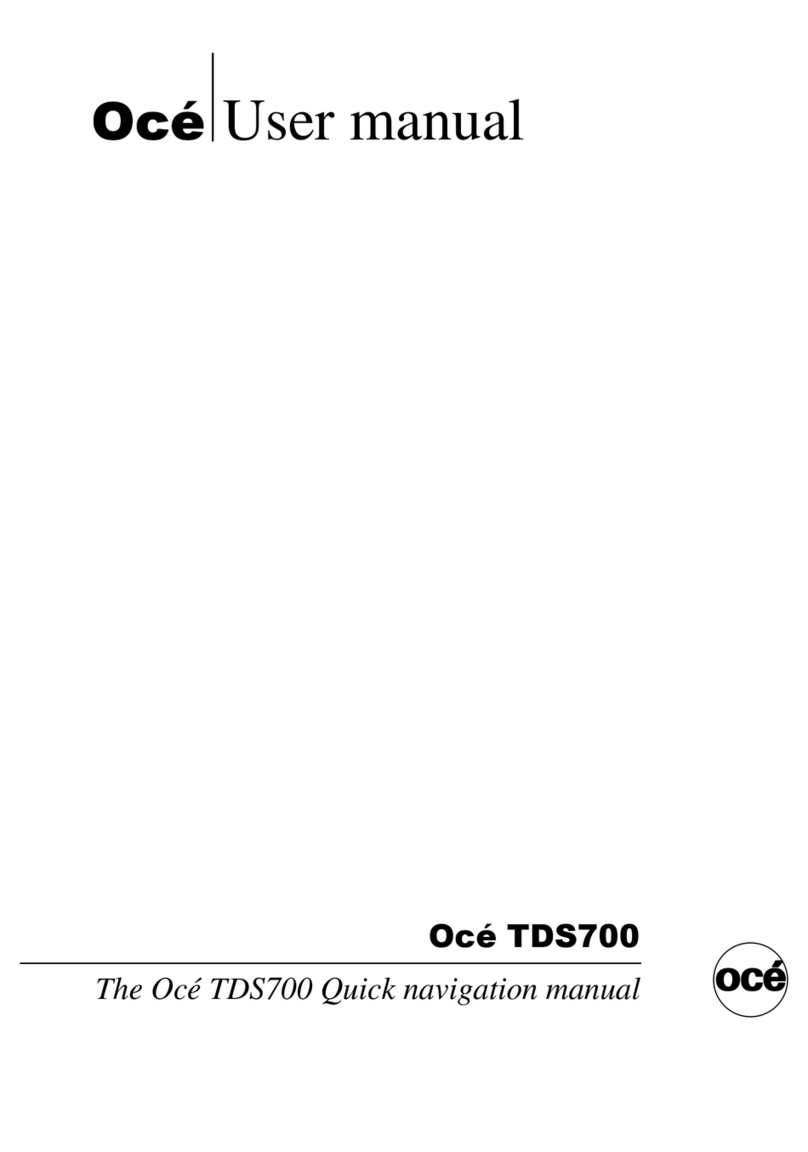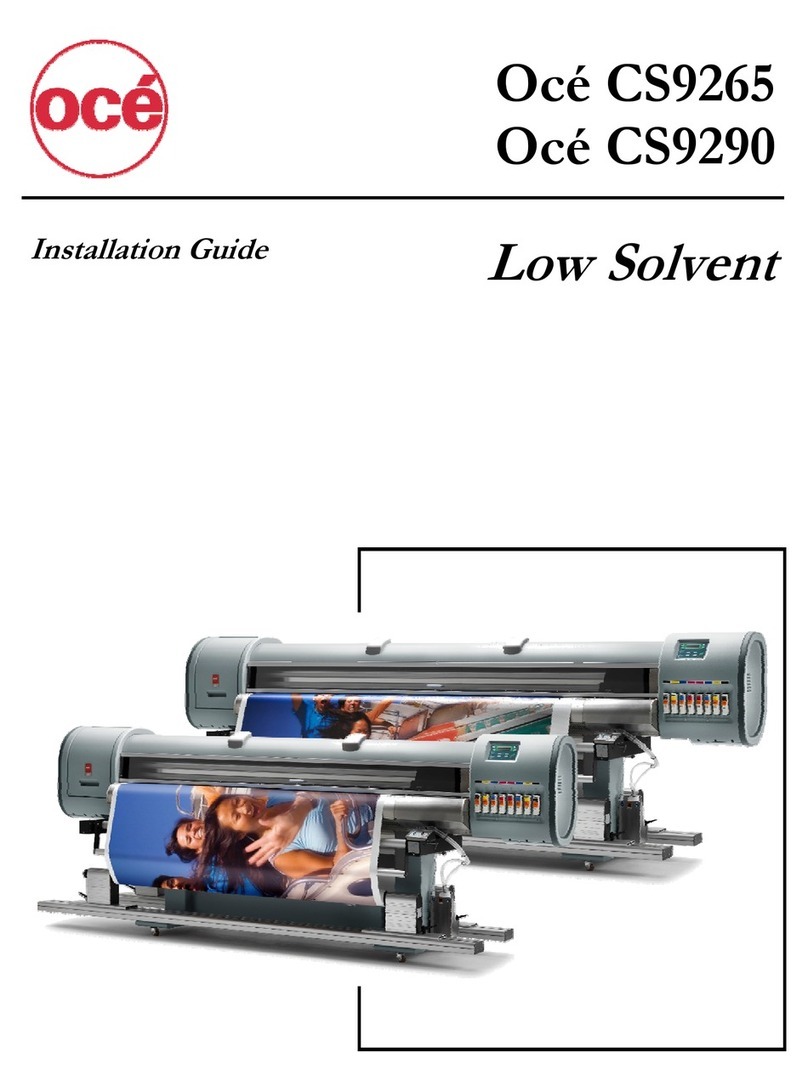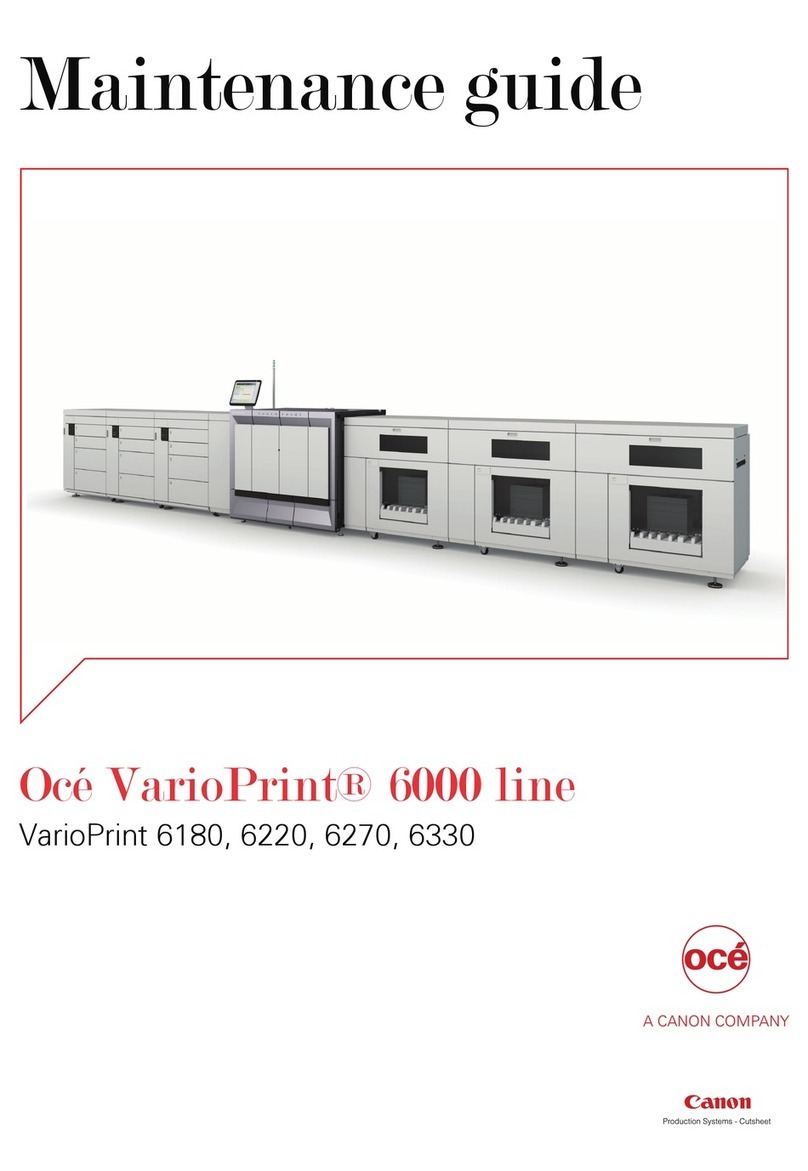
10 Chapter 1 Introduction
Preface
Customer Service
If your printer malfunctions and you are unable to resolve the problem, field service
technicians can be dispatched to your site to conduct repairs. Service visits are paid
for by the customer, either under a maintenance agreement, by purchase order or
prepayment. Time and material rates are charged for any service not covered under
a maintenance agreement. Before calling to report a problem, gather as much
information about the problem as possible and have it ready to provide to your
customer care center. The more information you can provide initially, the more
quickly the problem can be corrected.
Responsibilities of the Operator
The operator of the Arizona 200/250 GT must be properly trained. Océ provides
training for the operator in the use of the printer hardware and software at the time
of installation. It is the customer's responsibility to ensure that only properly trained
personnel operate the printer. Operators must be fully versed in the operation of
Onyx ProductionHouse®. For any operator unfamiliar with its operation, Onyx
ProductionHouse®training is required. Training courses are available; contact your
local Océ representative.
The operator or other trained personnel are expected to handle all user maintenance
asdetailedintheUserGuide,and also replacementofconsumableparts(exceptprint
heads). If your site has a technician in charge of printer maintenance, that person is
theoptimalcandidate.Whileanytrainedoperator mayperformroutine maintenance,
the best maintenance results from familiarity with the printer's internal operation and
history.
The printer requires daily printhead maintenance to ensure the highest print quality
and longer life for the printheads. The printer design provides you easy access to
perform this simple task. Periodic cleaning must be scheduled for some components
on a weekly basis. A few minutes spent cleaning also helps to ensure optimal printer
function and the highest quality prints.
It is the responsibility of the operator to try to eliminate simple problems before
calling a service representative. But knowing when to call for service is also
important. An untrained operator must not attempt to service the printer as this may
cause further damage. When you have determined that a service call is required, call
as soon as possible. See the Maintenance section for more details.
Responsibilities of the Arizona 200/250 GT Service Technician
Field service technicians must have Océ Display Graphics Systems Arizona 200/250
GT service training. The service technician is responsible for all repairs, upgrading
and modification requested by the customer or mandated by the Océ Display
Graphics Systems Service and Support Group. Service personnel are furnished with
proper tools for the installation and maintenance of the printer. In addition to the
tools and custom kits, each engineer will have basic tools for proper maintenance
and servicing.
